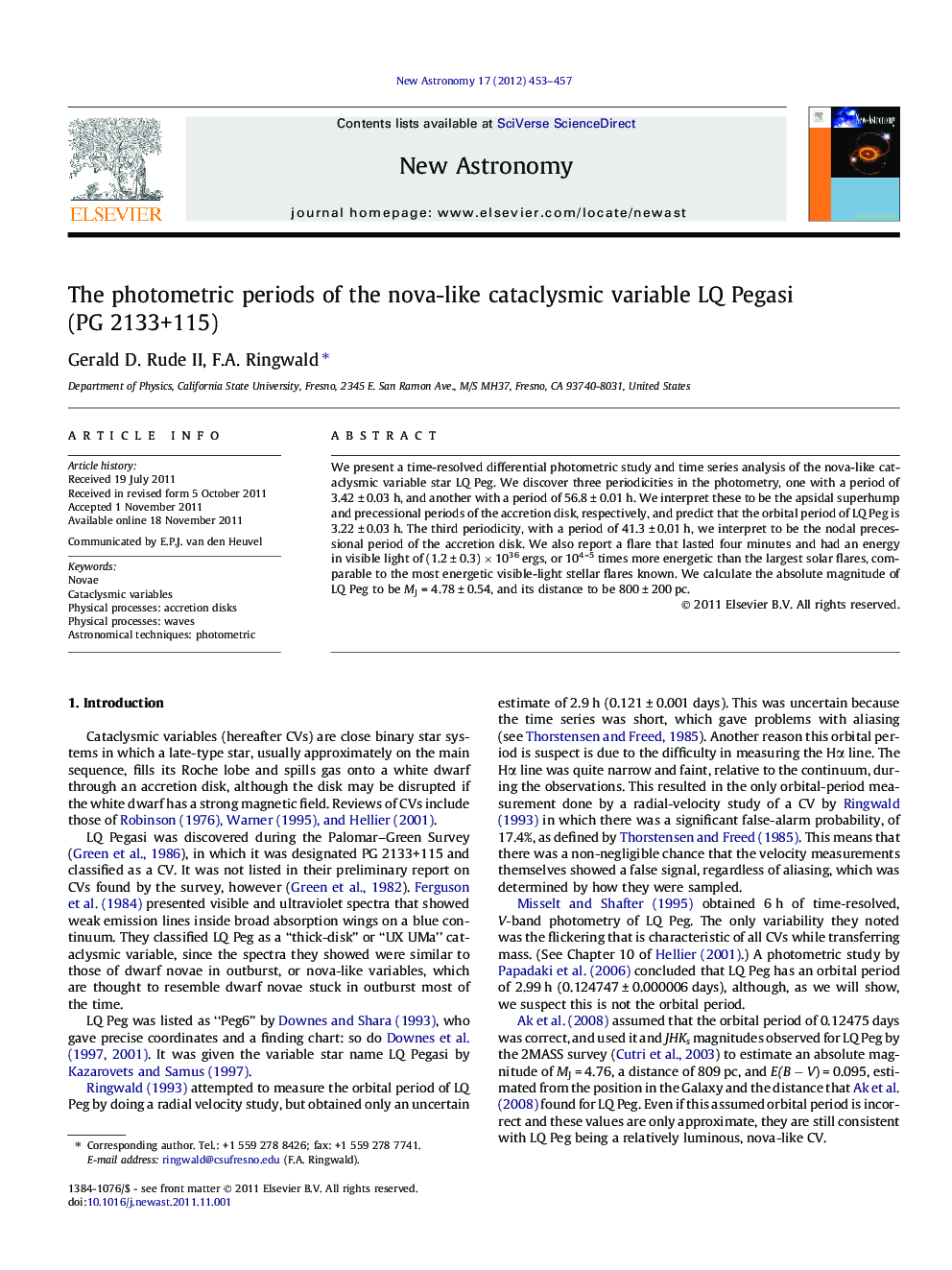| Article ID | Journal | Published Year | Pages | File Type |
|---|---|---|---|---|
| 1779291 | New Astronomy | 2012 | 5 Pages |
We present a time-resolved differential photometric study and time series analysis of the nova-like cataclysmic variable star LQ Peg. We discover three periodicities in the photometry, one with a period of 3.42 ± 0.03 h, and another with a period of 56.8 ± 0.01 h. We interpret these to be the apsidal superhump and precessional periods of the accretion disk, respectively, and predict that the orbital period of LQ Peg is 3.22 ± 0.03 h. The third periodicity, with a period of 41.3 ± 0.01 h, we interpret to be the nodal precessional period of the accretion disk. We also report a flare that lasted four minutes and had an energy in visible light of (1.2 ± 0.3) × 1036 ergs, or 104–5 times more energetic than the largest solar flares, comparable to the most energetic visible-light stellar flares known. We calculate the absolute magnitude of LQ Peg to be MJ = 4.78 ± 0.54, and its distance to be 800 ± 200 pc.
► We find three periodicities in the light curve of the cataclysmic variable LQ Peg. ► One has a period of 3.42 h, which we interpret as the apsidal superhump period. ► The second has a period of 56.8 h, which we interpret as the accretion disk precessional period. ► The third has a period of 41.3 ± 0.01 h, which we interpret as the nodal precessional period. ► We report a flare comparable to the most energetic visible-light stellar flares.
